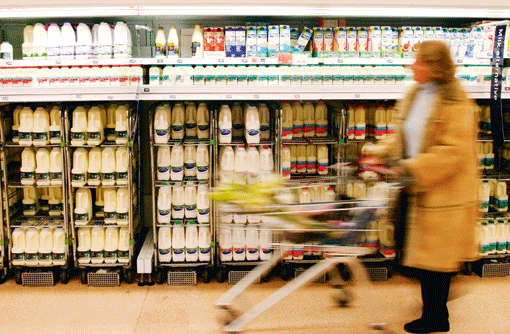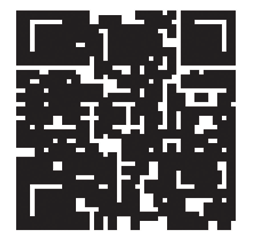QR codes lets the milk do the talking

Organic dairy farmer Roger Ridgway and his milking herd have already shared the breakfast table with many families thanks to a simple two-dimensional matrix barcode that gives them access to Mr Ridgway and his herd.
By scanning the so-called QR (Quick Response) code on cartons of Calon Wen milk with a smartphone app, consumers can play a video that tells Mr Ridgway’s story. They can watch him herding in the cows from the field and getting the milking done.
Producer/consumer relationship
Kirsty Morris, who developed the QR concept for the Welsh organic milk co-operative, says harnessing new technology to promote the story behind food products cultivates a genuine relationship between the consumer and producer.
“In an age of food miles and supermarkets there is a growing disconnection between those making our food and those eating it,” she says.
“I’m lucky, I grew up on a dairy farm and I know who made my milk, how it was made and the community that it supports. Not every consumer has had that opportunity, until now.”
She says QR codes make customer engagement accessible and affordable to small producers because the technology is free and easy to use. “My vision is of a family sitting round the table wondering where milk comes from and they just have to scan the milk carton to find out direct from the farmer.”
A QR code works by encoding information. It can be scanned by a smartphone’s camera. Depending on the type of code it is, it might direct the viewer to a company’s website or even make a phone call.
The QR code
The code concept was invented in 1994 by a subsidiary of Toyota Motors and was originally designed to track car parts during the manufacturing process. It quickly became clear that the technology could have a wide variety of commercial uses.
 |
|---|
A QR code contains encoded information such as text, a URL, or video. By scanning with a smart phone app, this information can be easily downloaded. |
The code consists of black modules arranged in a square pattern on a white background. The information encoded may be text, a URL, or other data such as, in Calon Wen’s case, a video.
Roger Ridgway, the farmer featured in the first Calon Wen video, milks 75 cows on 125 acres in Pembrokeshire, producing 6,500 litres a cow a year, which he supplies to Calon Wen. He milks in a 35-year-old, six-abreast parlour which shows the consumer that milk production is not all about big and trendy dairy farming. “You’re seeing a real dairy farm, warts and all,” he says.
He believes codes on QR-capable products work well as a marketing tool. “If it leaves a happy memory from a short video clip then maybe they will pick up another carton of Calon Wen.” Farmers could use QR codes in a range of ways, such as on business cards or on the labels of their food products.
Social media
Social media platforms such as Facebook, Twitter and LinkedIn are also fast becoming a way of connecting with consumers and sharing knowledge.
Dairy consultant Tom Phillips, of Pasture to Profit, set up a Facebook group in 2008. The page is now shared by about 400 pasture-based farmers as well as vets and farm advisers. He is also active on Twitter.
He believes Facebook is an ideal medium for farmer networking and as a means of solving on-farm issues. “I act as facilitator which is an important role to get the group started and to keep the momentum,” says Mr Phillips. “Members need to see something new every time they go online otherwise they lose interest.”
Mr Phillips uses Twitter to communicate pasture-related issues to a broader audience which, he says, allows him to act as advocate for his clients. “About 10 of my own clients have taken on Twitter on a regular basis. I think its going to be important that more farmers actively get involved in Twitter to promote their farms and farming systems to the wider audience.”
How to create a QR code
If farmers want to create a QR code to market their own products, they can follow a simple process of entering the appropriate data into a QR code generator.
There are several websites that will allow the creation of QR codes within seconds. For example, if using Kaywa, visit http://qrcode.kaywa.com, enter the URL, text and whatever needs to be displayed before using the generate function. Once it’s generated, it can be saved and displayed wherever needed.
Read more from our marketing special
